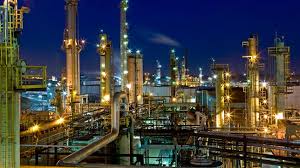Despite growing global demand for fuel, over 100 oil refineries—representing 21% of the world’s refining capacity—are at risk of shutting down within the next decade, according to a new analysis by Wood Mackenzie. The primary drivers? Soaring operational costs, strict carbon regulations, and insufficient investment in decarbonization technologies.
Refinery Closures on the Horizon
Out of 410 refineries worldwide, 101 are under threat, particularly those in regions with aggressive carbon pricing regimes like the EU, UK, and Canada. These refineries face mounting pressure to invest in low-carbon technologies—such as carbon capture, energy efficiency upgrades, and alternative fuels—or risk becoming economically unviable.


Wood Mackenzie warns that carbon prices in these jurisdictions are set to triple the global average by 2035, significantly raising the cost of refinery operations and prompting shutdowns unless policy shifts occur.
“Refineries without committed investments in low-carbon technologies… are especially exposed,” Wood Mac noted.
Demand Still Growing—But Supply Security at Risk
Ironically, these closures are happening despite steady or even rising demand for diesel and other oil products. Analysts previously predicted higher diesel prices in 2024, pointing to planned refinery closures as a key factor—even as consumption holds firm.
Among the significant closures on the way:
- Grangemouth refinery in Scotland (Q2 2025)
- LyondellBasell’s Houston refinery
- Phillips 66 Los Angeles refinery (end of 2025)
Combined, these account for around 1 million barrels per day (bpd) of refining capacity being removed from the global system.
At the same time, new capacity is coming online in Asia, where carbon policies are less stringent. Roughly 800,000 bpd in new capacity is expected to launch, especially in China, helping offset some losses. However, this shift creates geographic imbalances, raising concerns over energy security in the West.


Asia Expands While the West Contracts
China, paradoxically, is both decarbonizing and expanding refining capacity. While it pushes electrification and LNG-powered trucks, it recently opened a new refinery, boosting capacity by 400,000 bpd. This dual strategy—shifting toward cleaner transport while investing in refining and petrochemicals—reflects a more flexible, long-term approach to energy security.
Meanwhile, the EU and North America may face increased fuel shortages and growing reliance on imports, especially if closures outpace capacity additions and EV adoption fails to meet expectations.
Petrochemicals: The Refining Lifeline
Wood Mackenzie suggests that refineries integrated with petrochemical production will be best positioned to survive the coming shake-up. While forecasts for fuel demand are modest or declining, plastics and petrochemical demand remains strong, providing a cushion for complex facilities.

Policy Over Demand: The Real Threat
Contrary to assumptions, falling demand is not the main driver of refinery closures. Instead, it’s the rising cost of compliance and hostile policy environments. With EV sales underwhelming and electrification progress slower than projected, fuel demand remains stable. That makes current shutdown trends a matter of policy and economics—not demand destruction.
The U.S. Energy Information Administration has already hinted at potential fuel shortages and the need to curb exports to protect domestic supply.
Bottom Line
The global refining sector is at a crossroads. While demand for fuels persists, regulatory and economic pressures are forcing closures, raising serious questions about future supply security, price volatility, and Western dependence on foreign refineries.
Unless policymakers strike a better balance between decarbonization goals and energy security, the next decade could be marked by fuel scarcity, higher prices, and increased geopolitical vulnerability.




